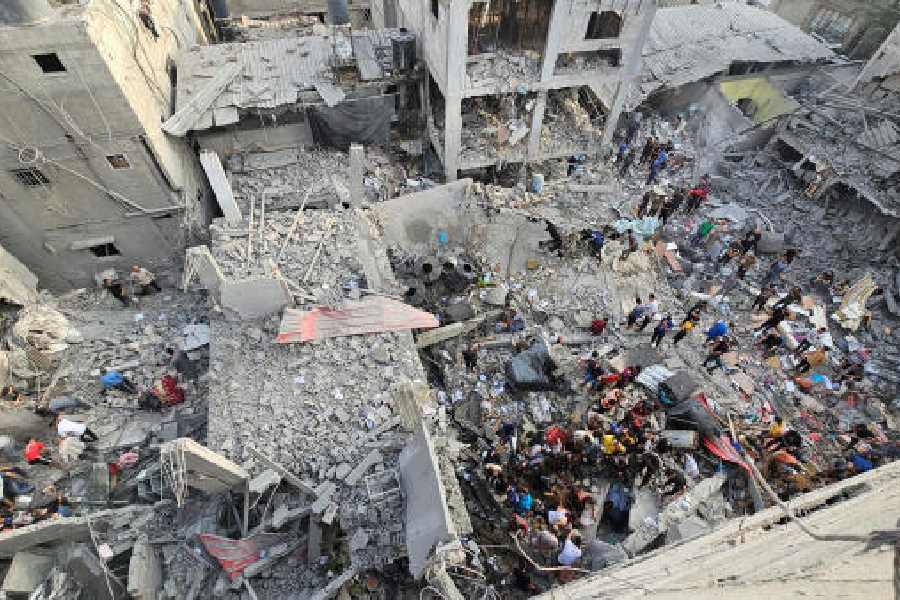Dozens of civilians were killed and hundreds wounded in the strike
Christoph Koettl, Ainara Tiefenthaler, Haley Willis, Alexander Cardia
New York
Published 05.11.23,

Palestinians search for casualties after Israeli airstrikes on houses in the Jabalia refugee camp, northern Gaza Strip, on ThursdayReuters
Israel used at least two 907-kg bombs during an airstrike on Tuesday on Jabalia, a dense area just north of Gaza City, according to experts and an analysis conducted by The New York Times of satellite images, photos and videos.
Hospital officials said dozens of civilians were killed and hundreds wounded in the strike. Israel said it was targeting a Hamas commander and fighters, as well as the network of underground tunnels used by Hamas, the militant group that controls the Gaza Strip, to hide weapons and fighters.

Palestinians search for casualties after Israeli airstrikes on houses in the Jabalia refugee camp, northern Gaza Strip, on ThursdayReuters
Israel used at least two 907-kg bombs during an airstrike on Tuesday on Jabalia, a dense area just north of Gaza City, according to experts and an analysis conducted by The New York Times of satellite images, photos and videos.
Hospital officials said dozens of civilians were killed and hundreds wounded in the strike. Israel said it was targeting a Hamas commander and fighters, as well as the network of underground tunnels used by Hamas, the militant group that controls the Gaza Strip, to hide weapons and fighters.
Israel’s use of such bombs, the second largest type in its arsenal, is not uncommon, and the size is generally the largest that most militaries use on a regular basis. They can be used to target underground infrastructure, but their deployment in a dense and heavily populated area such as Jabalia has raised questions of proportionality — whether Israel’s intended targets justify the civilian death toll and destruction its strikes cause.
Evidence and analysis show that the Israeli military dropped at least two 2,000-pound bombs on the site. Two impact craters are about 40 feet wide — dimensions consistent with underground explosions this type of weapon would produce in light, sandy soil, according to a 2016 technical study by Armament Research Services, a munitions research consultancy.
Marc Garlasco, one of the authors of the study, said the bombs might have had “a delay fuse”, which delays detonation until milliseconds after penetration of the surface or a building so that the explosion’s destructive power reaches more deeply.
The bombs are normally outfitted with guidance kits called Joint Direct Attack Munitions, turning them from so-called dumb bombs into precision, GPS-guided weapons.
Garlasco, who works as a military adviser for the Dutch organisation PAX, said it was unclear from visuals alone if the bombs were equipped with bunker-busting warheads, which are designed to pierce through reinforced military structures. But Israel’s publicly stated objective was to target a Hamas leader in an underground bunker.
Without access to the strike site, the Times was not able to determine whether there were tunnels below.
The only larer bomb in Israel’s arsenal is 2,041-2,268kg, according to Jeremy Binnie, West Asia and Africa editor for defence intelligence firm Janes. Eighty-three countries, including the US but not Israel, have signed a commitment to refrain “as appropriate, from the use of explosive weapons in populated areas” because of their likelihood of harming civilians.
“Israel’s continual bombardment of Gaza, including this Jabalia strike, magnifies this concern many times over,” said Omar Shakir, the Israel and Palestine director at Human Rights Watch.
No comments:
Post a Comment